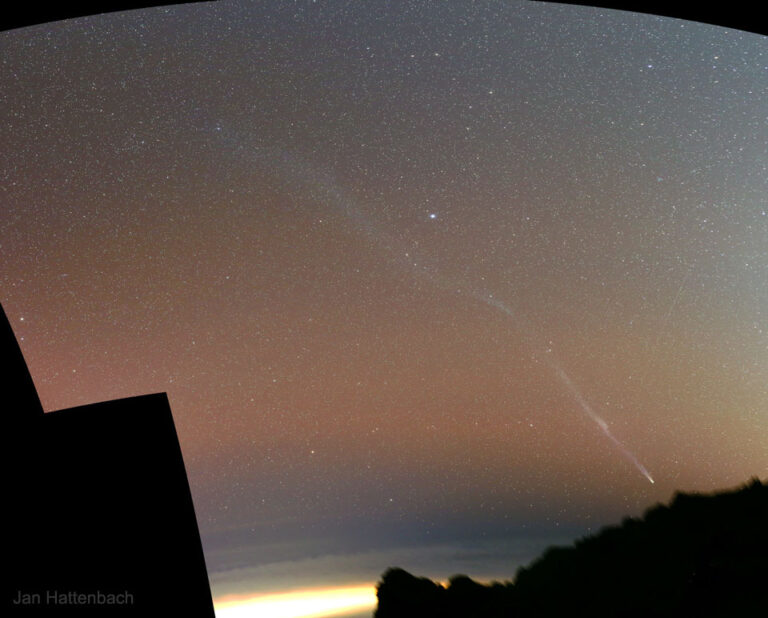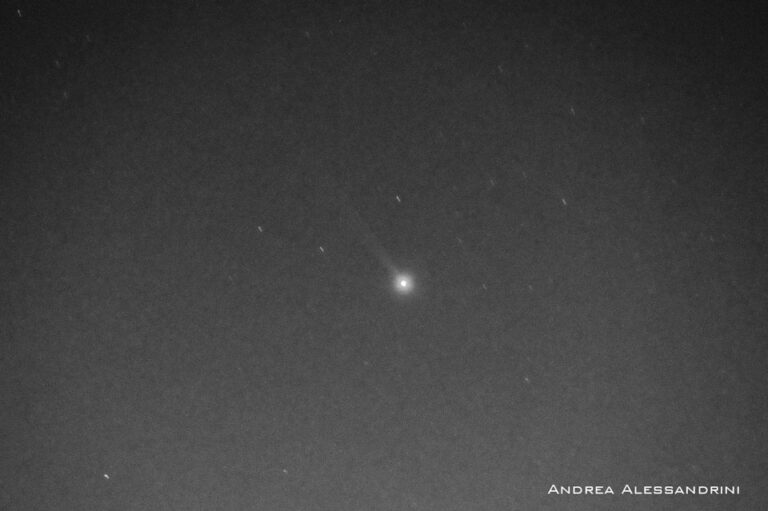李奥纳德彗星的长尾
2022年1月3日 Comet Leonard’s Long Tail Image Credit & Copyright: Jan Hattenbach Explanation: You couldn’t see Comet Leonard’s extremely long tail with a telescope — it was just too long. You also couldn’t see it with binoculars — still too long. Or with your eyes — it was too dim. Or from a city — the sky was too bright. But from a dark location with a low horizon — your camera could. And still might — if the comet survives today’s closest encounter with the Sun, which occurs between the orbits of Mercury and Venus. The featured picture was created from two deep and wide-angle camera images taken from La Palma in the Canary Islands of Spain late last month. Afterwards, if it survives, what…


